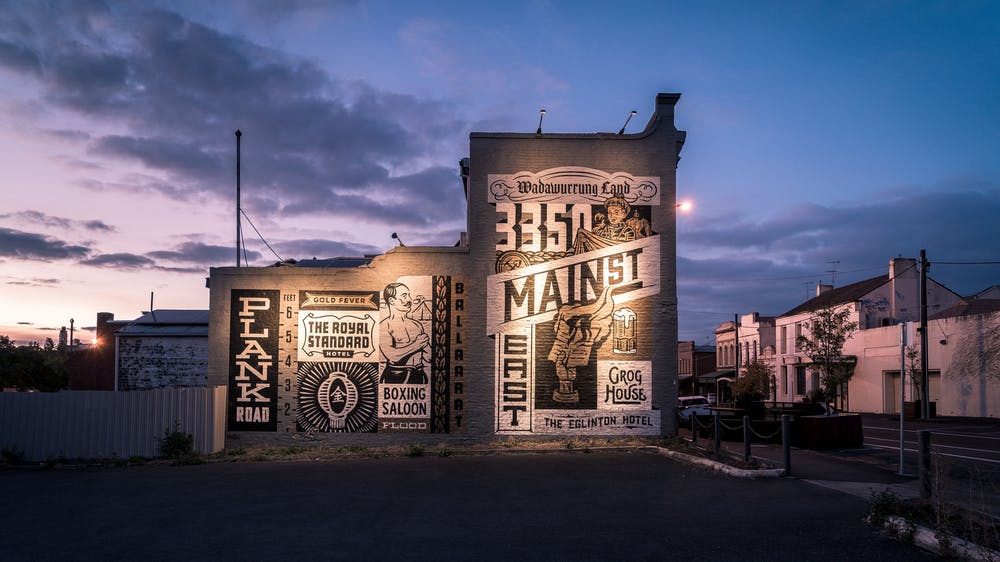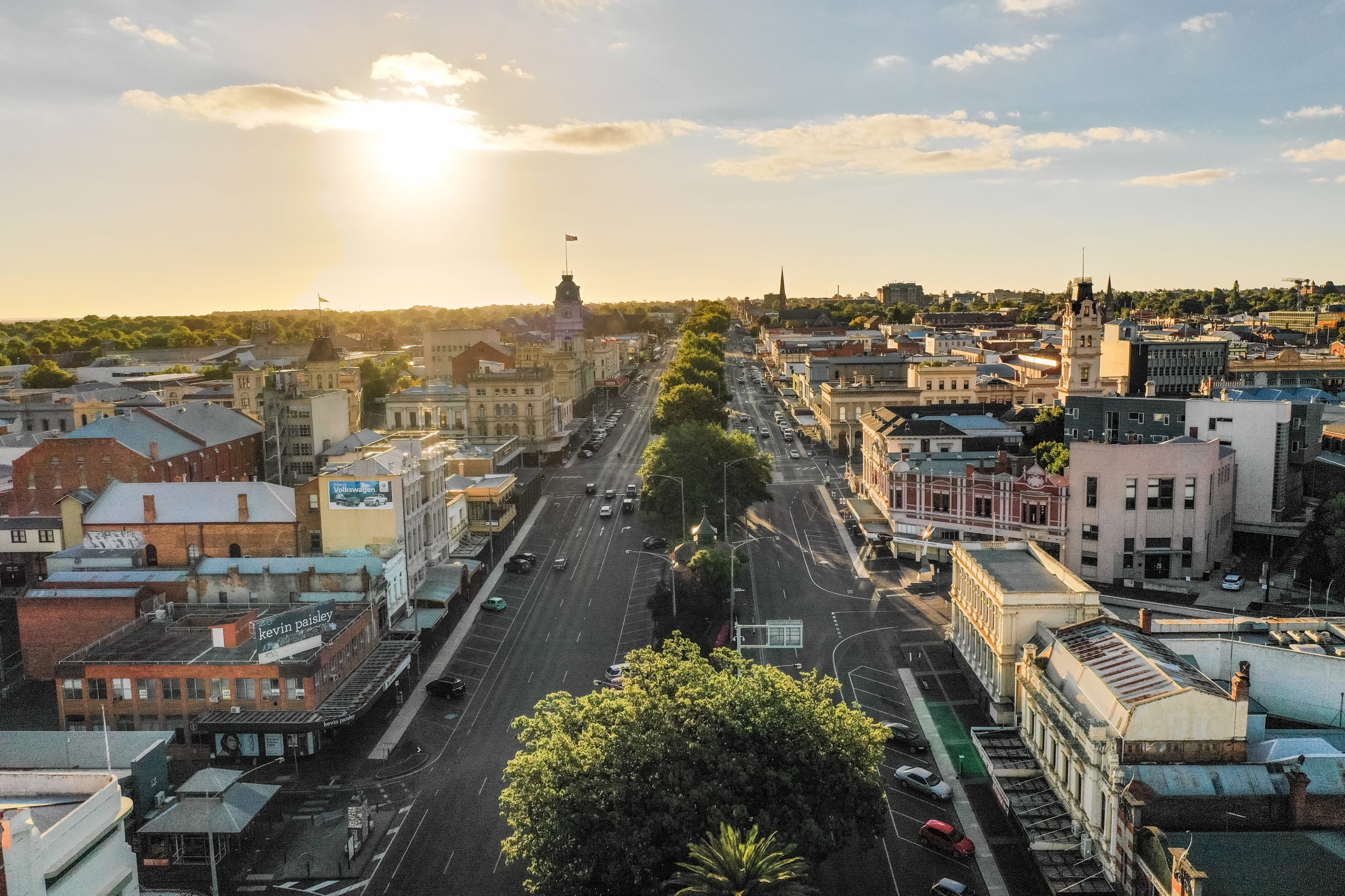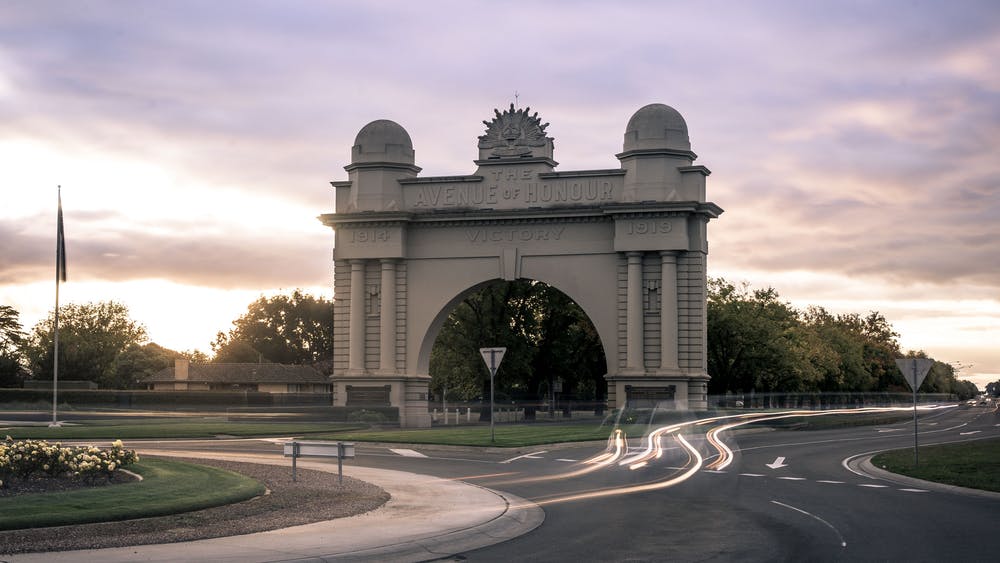Start typing to search
You can also hit “Enter” on your keyboard to submit your query.
0What's on
0Everything Else
Ballarat Public Art Walks: Lake Wendouree
Visit Ballarat
17 Oct 2022
Filed underSee & Do
This is one of four public art walks highlighting the City of Ballarat’s Public Art Collection.
The collection holds over 120 artworks and is one of the largest and most significant regional public art collections in Australia.
- Moderate walk, mostly flat, some uneven surfaces
- 2 hours, 6km walk around Lake Wendouree
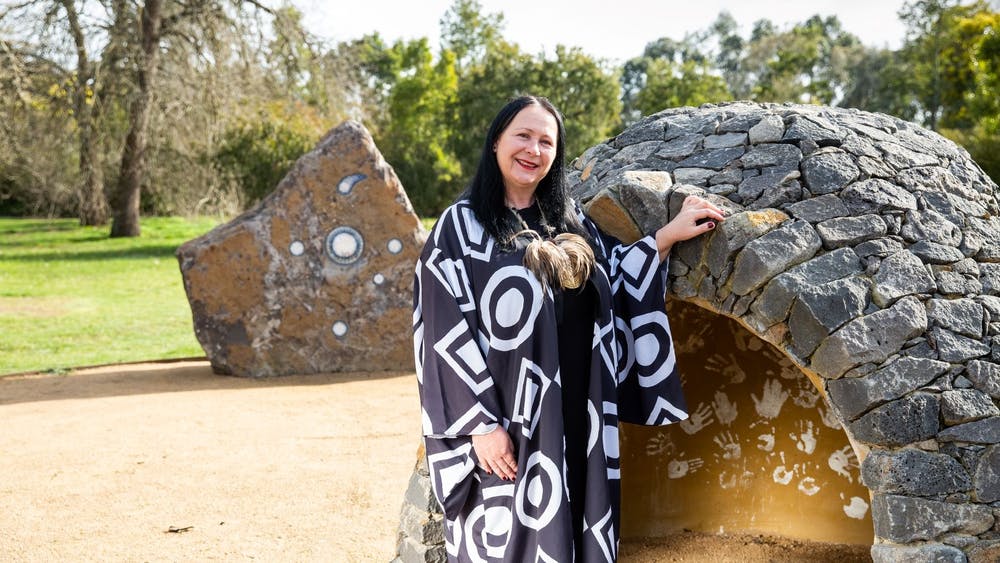
Murrup Laarr
Deanne Gilson (2019)
North Gardens Reserve, Wendouree Parade
Murrup Laarr translates as ‘ancestral stones’ in Wadawurrung.
This artwork by Deanne Gilson is located in the North Gardens Indigenous Sculpture Park.
The park is a significant project for the City of Ballarat and will feature works by Aboriginal and Torres Strait Islander artists, celebrating the richness and diversity of culture and telling important cultural stories.
Deanne Gilson, a Wadawarrung community member and established artist, installed the first artwork commissioned by the City of Ballarat for the Sculpture Park in early 2019.
Murrup Laarr consists of a traditionally-built stone hut in the middle of a circle of basalt standing stones, marked with ceramic plates reflecting the stories and symbols of dreaming, memory, men and women’s business.
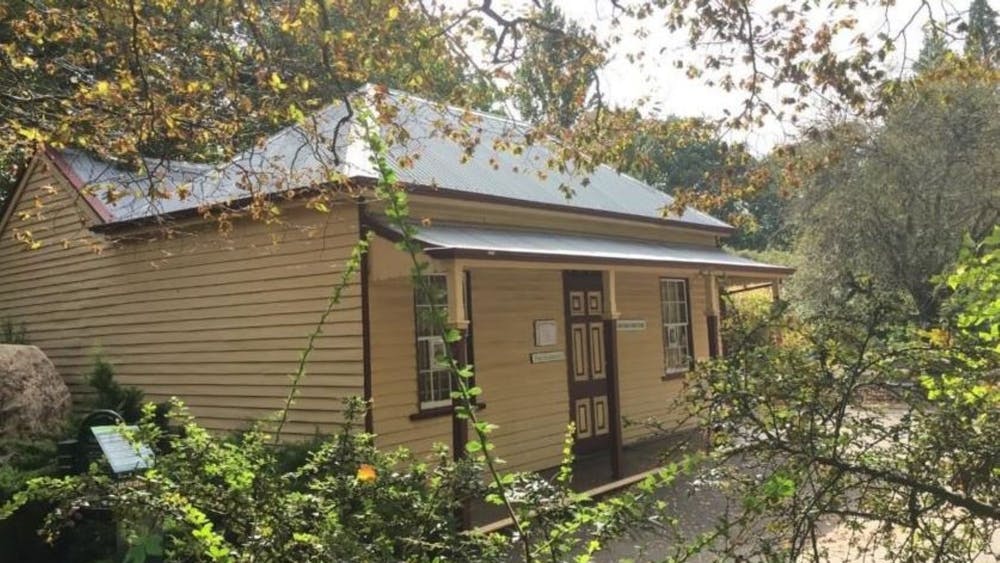
Adam Lindsay Cottage
Wendouree Parade, Lake Wendouree
Located in the Ballarat Botanical Gardens near Lake Wendouree, the Adam Lindsay Gordon Craft Cottage features selected local craft work by members of the Crafts Council of Ballarat.
Adam Lindsay Gordon was a British-Australian poet, horseman, police officer and politician.
He was the first Australian poet to gain considerable recognition overseas and he lived in this cottage between 1867 and 1868, when it was located behind Craig’s Royal Hotel on Lydiard Street North.
His only daughter died while he was in Ballarat and only his poetry, with its rolling rhythm, survives him.
This famous poet is also acknowledged through an equestrian statue in Ballarat’s Sturt Street Gardens.
The cottage was moved to the Ballarat Botanical Gardens in the 1930s and, since the early 1990s, has been the home of the Crafts Council of Ballarat.
Craft work includes jewellery, painting, photography, woodwork, cards, textiles (knitting, sewing, crochet and felting) including scarves, hats, gloves, bags and embroidery.
Inside the cottage, you will discover an extensive variety of local craft work of the highest quality.
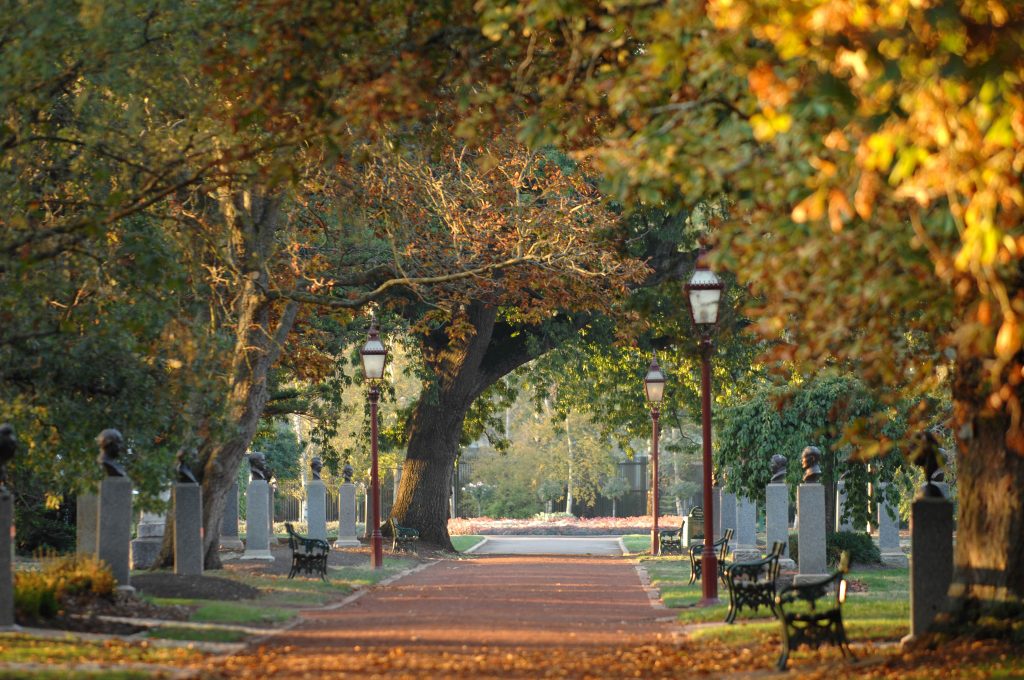
Ballarat Botanical Gardens
1857
Enter via Wendouree Parade or Gillies Street
One of Australia’s most significant cool climate gardens, the Ballarat Botanical Gardens feature a remarkable collection of mature trees and a large number of public artworks.
The Ballarat Botanical Gardens are home to the Prime Ministers Avenue, a collection of bronze busts that is one of only three collections featuring representations of all of Australia’s Prime Ministers.
The busts of Barton, Deakin, Watson, Reid, Fisher, Cook, Hughes, Bruce, Scullin, Lyons, Page, Menzies, Fadden and Curtin were created by Wallace Anderson.
The bust of Chifley was created during Chifley’s election campaign in 1946 by Ken Palmer.
The busts of Holt, McEwen, Gorton, McMahon and Whitlam were created by Victor Greenhalgh.
The busts of Fraser, Hawke, Keating, Howard, Rudd and Gillard were created by Peter Nicholson.
The busts of Abbott and Turnbull were created by Linda Klarfeld.
The Stoddart collection consists of 12 white Italian marble figures donated by Thomas Stoddart in 1884.
The statues are all figures from classical mythology – Spring, Summer, Autumn, Winter, Hercules, Pomona, Bacchante, Hebe, Flora Farnese, Leda, Mercury and Flora.

Australian Ex-Prisoners of War Memorial
Peter Blizzard (2004)
South Gardens Reserve, Wendouree Parade
This memorial to Australian Ex-Prisoners of War is dedicated to more than 36,000 Australian men and women who were held captive as prisoners by the enemy during the Boer War, World War 1, World War 2 and the Korean War. This memorial honours them.
Water springs from beneath the ‘Lest We Forget’ stone and flows down the wall into the narrow watercourse in front of the first group of names and into the reflective pool, then continues past the second group of names.
Finally, it disappears under the pathway, returning to its source under the ‘Lest We Forget’ stone to start the journey again.
Water symbolizes the essential nature of man, sacrifice, suffering, spirituality, healing, cleansing, birth and re-birth.
In this memorial, it forms a continuous cycle, binding all Australian Ex-Prisoners of War together for all time.
The memorial is created from natural materials and is designed to be in harmony with the Ballarat Botanical Gardens, and to create a sense of timeless, dignity and respect.
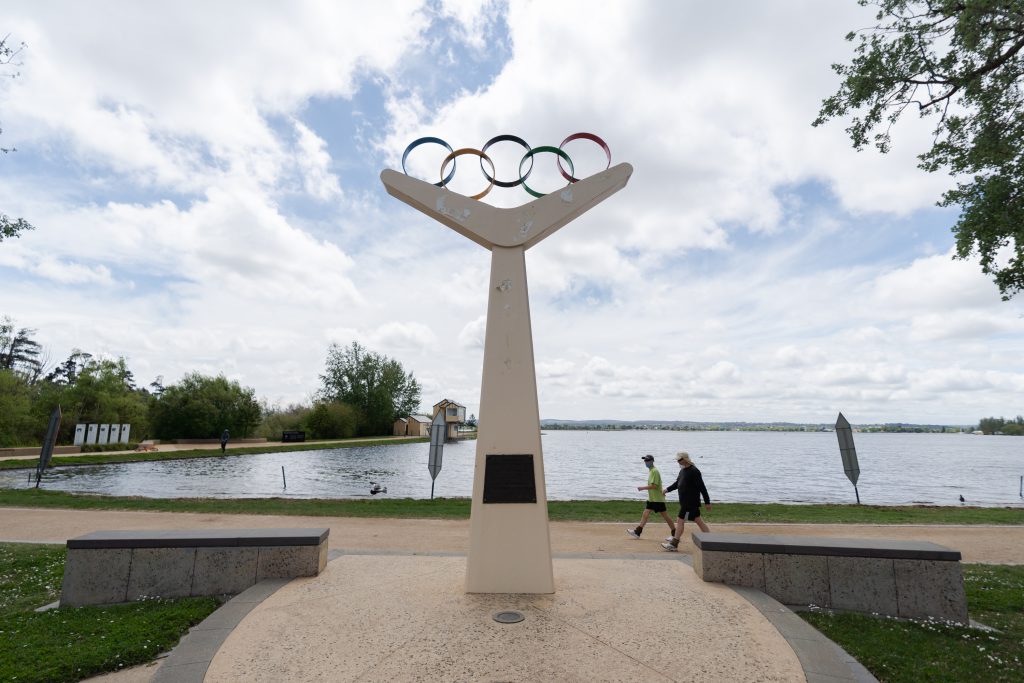
Olympic Precinct
Wendouree Parade near Hamilton Avenue
The Olympic Games took place in the southern hemisphere for the first time in 1956 (Games of the XVI Olympiad).
They were hosted in Melbourne from 22 November to 8 December 1956.
The rowing and canoeing events took place at Ballarat’s Lake Wendouree.
The Olympic Precinct was developed to commemorate Ballarat’s involvement in the Olympics and to honour the achievements of Ballarat Olympians.
The precinct, on the Lake Wendouree foreshore, includes a focal memorial of a boomerang topped with the five Olympic rings, a cauldron fountain, bronze hand and foot imprints of Ballarat’s Olympians, and a time capsule.
The memorial was constructed by local builders H. Troon.
Ballarat Paralympic Sports Avenue
2004
Wendouree Parade near Hamilton Avenue
Five Ballarat athletes who represented their country at the Paralympic Games were honoured as part of a ceremony to officially open the Ballarat Paralympic Sports Avenue.
Robert (Sandy) Blythe, Brad Dubberley, Gregory Smith OAM, Peter Tait and Jodi Willis-Roberts OAM became the first athletes to have plaques in their honour added to the new avenue at Lake Wendouree.
The Ballarat Paralympic Sports Avenue is believed to be the first memorial to honour Paralympians in regional Australia.
The avenue design embodies the principles of the Paralympic movement and its motto of “spirit in motion”.
Rustic Fountain
1879
Wendouree Parade near Webster and Ripon streets
The Rustic Fountain was built to commemorate the first water supply to Ballarat.
This organic, volcanic stone structure is similar to ones which were erected in the Carlton Gardens in Melbourne.
Ballarat outgrew Lake Wendouree’s ability to supply the township with water in 1910, and the fountain was then turned off.
The fountain was restored in 2015.
Ned Williams Monument
Mr W Morris of Creswick Road
View Point, Wendouree Parade
The Edward King (Ned) Williams monument was originally a drinking fountain that stands in memory of the avid rowing enthusiast and community member.
It was erected by his friends in 1901.
A Carrara marble structure on a basalt base, the memorial is constructed of eight tiers of marble.
The central element is bordered by four pillars of decorative capitals.
Ned Williams was born in Bristol, England, in 1825 and died in Ballarat in 1900.
The memorial was established to honour Ned’s reputation as a veteran oarsman, and his dedication to supporting younger generations.
Ned was directly involved in developing the wetlands to convert it to a lake suitable for rowing.
Restoration work to create a new urn top piece for the memorial was completed in 2020.
